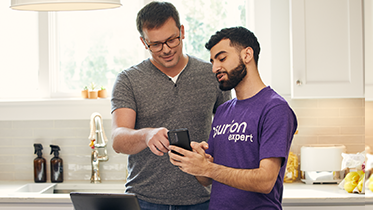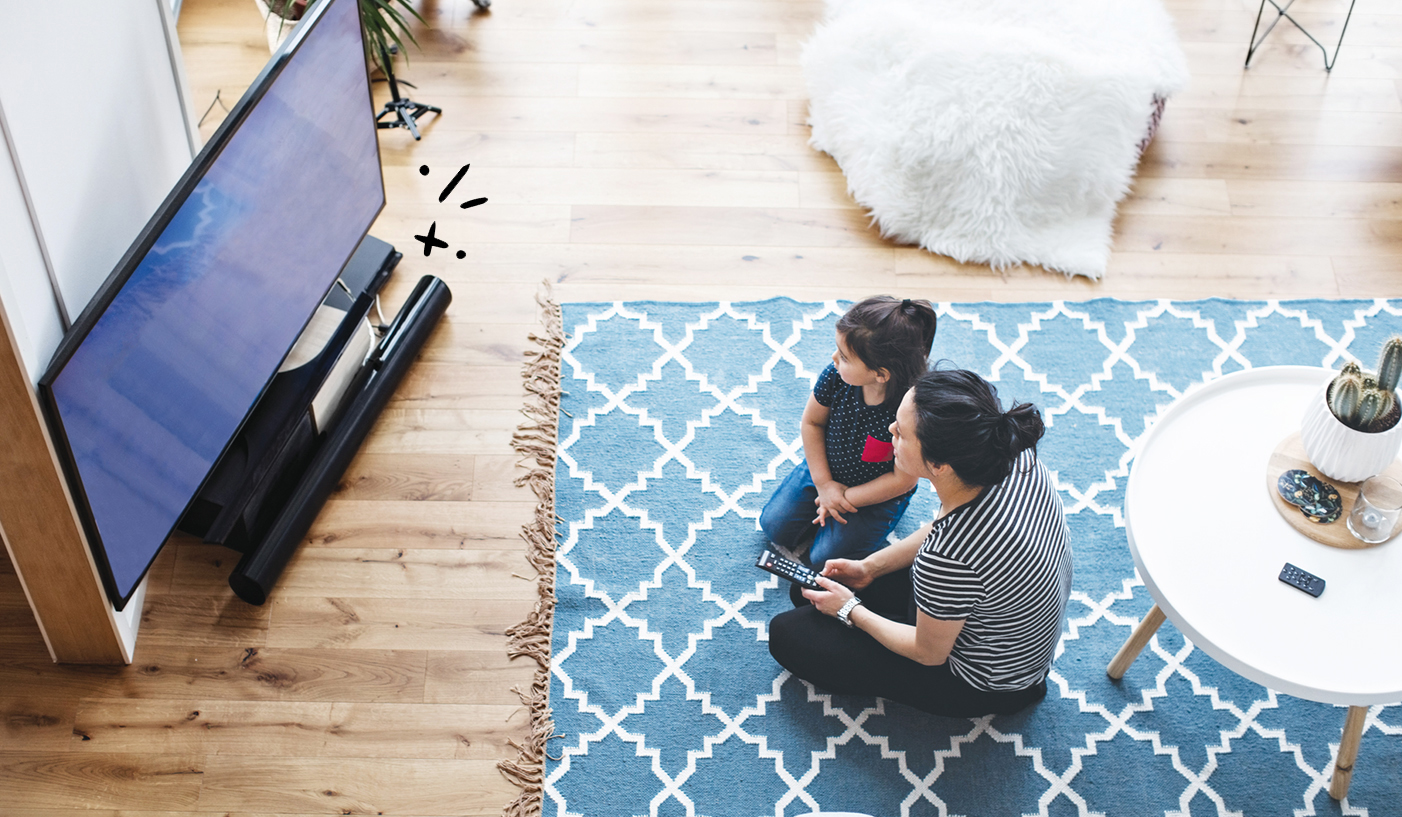Smart light bulbs make it easy to customize your space—whether you want to dim the lights from your couch or set a schedule to match your routine. But before you can start controlling them from your phone or voice assistant, you’ll need to connect them to your Wi-Fi network. At Asurion, our experts help people set up and troubleshoot smart home devices every day. Here’s a simple guide to help you pair your smart bulbs with your Wi-Fi and get them glowing in no time. Each brand, like Philips Hue, TP-Link, and GE Cync, has a slightly different setup process, but the general steps are similar.
Install and connect your smart bulb
The first step to set up your Wi-Fi light bulbs is the same as any other light bulb: screw it into the socket. Remember to turn the light switch off first for safety. Make sure to screw the bulb in tightly, then turn the power back on.
Next, follow these steps to connect the smart lights and set them up:
- Download the manufacturer’s app (e.g., TP-Link Tapo, Philips WiZ, or GE Cync). There should be details on the box or the smart bulb setup guide to help you find the right app.
- Create an account on the app if you don’t have one or sign in if you do.
- Look for an option that says Add Device or something similar. Then, tap Light Bulb.
- Follow the prompts in the smart light app setup to connect the smart home lighting control to your 2.4 GHz Wi-Fi network. The app may ask you to turn the bulb on/off to enter pairing mode, so make sure you’re standing near the switch.
Link your smart bulb to a voice assistant
You may want to pair your smart light bulb with a voice assistant so you can control the light simply by speaking. Try these steps:
- Open the Alexa™ or Google Home app on your mobile device.
- Add the smart light brand skill or integration. You may need to type in your brand of smart bulb to search for it.
- Look within the app for devices on the network under a label such as Discover Devices.
- Once you find your new light bulb, label it with the room that it’s in. If you have multi-bulb Wi-Fi control, you may also want to add more specific labels so you can distinguish between lights in the same room.
- Test the voice control with a sample command, such as “Turn off kitchen lights.”
If the right lights turn on and off with your voice controls, you’ve completed your easy smart bulb installation and smart device network pairing.
Now your lights should be ready to go, so try out 3 cool things you can do with smart lights.
Troubleshooting tips if your smart bulb won’t connect
If you complete the wireless light setup steps but can’t get your bulb to connect, try these tips to troubleshoot your smart bulb:
- Make sure your phone and the bulb are on the same 2.4GHz Wi-Fi network.
- Move closer to your Wi-Fi router.
- Reset the smart light bulb by turning it off/on several times, as instructed by the app.
- Try a different light socket.
- Restart your Wi-Fi router.
If you try these steps and are still having trouble with your Wi-Fi pairing smart bulbs, contact Asurion for tech support. Our experts are available to troubleshoot all your tech questions.
FAQ
Can I use both 2.4 GHz and 5 GHz Wi-Fi for smart lights?
Smart lights generally only work on a 2.4GHz smart bulb connection. As long as you connect them to the 2.4GHz band, it’s alright to also have a 5GHz running, though. You may be able to control the smart light from a device on the 5GHz band since the 2.4GHz and 5GHz bands share the same local network. However, if you’re experiencing Wi-Fi issues, make sure that your smart lights and mobile device are all connected to the 2.4GHz band.
What should I do if my smart bulb won’t connect?
If your smart light bulb won’t connect, try restarting your router and making sure the bulb is connected to your 2.4GHz Wi-Fi band. Make sure you have the most up-to-date phone app to control the lights. Consider performing a factory reset of the lights using the manufacturer's instructions.
Do all smart light bulbs need a hub for setup?
No, you don’t necessarily need a separate hub to set up smart lights. Check the requirements for the type of smart lights you purchased. If you bought Wi-Fi or Bluetooth-enabled smart bulbs, you’ll be able to connect them without a hub.




